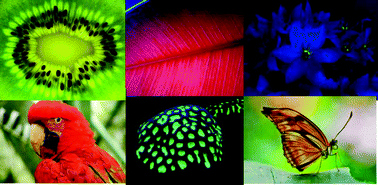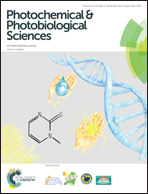Reviewing the relevance of fluorescence in biological systems
Abstract
Fluorescence is emitted by diverse living organisms. The analysis and interpretation of these signals may give information about their physiological state, ways of communication among species and the presence of specific chemicals. In this manuscript we review the state of the art in the research on the fluorescence emitted by plant leaves, fruits, flowers, avians, butterflies, beetles, dragonflies, millipedes, cockroaches, bees, spiders, scorpions and sea organisms and discuss its relevance in nature.

- This article is part of the themed collection: The 16th International Congress on Photobiology

 Please wait while we load your content...
Please wait while we load your content...